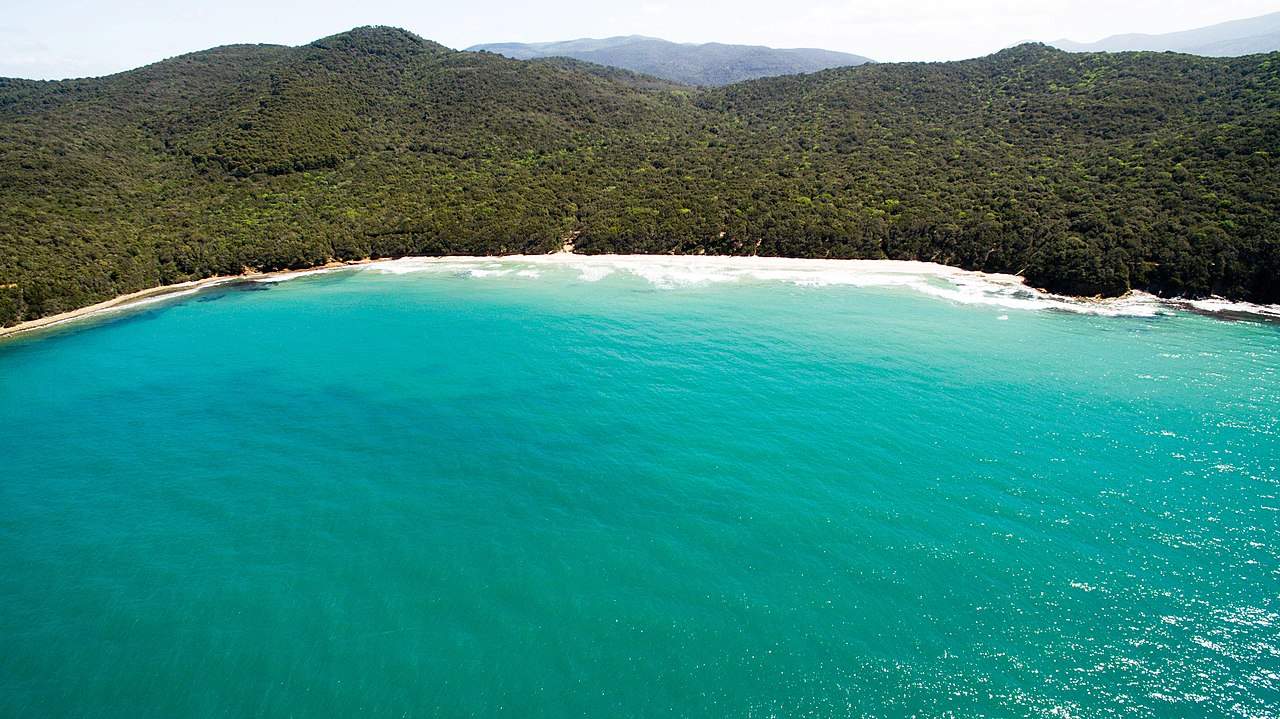In order to preserve the natural ecosystem of a prized beach in Tuscany, a closed number has been instituted: the municipality of Scarlino, in Maremma, for the summer months allows entry to the beach of Cala Violina only with prior reservation and in a maximum number of 700 people. The risk of overcrowding distorting the environment of this highly valuable natural heritage site led to this decision in 2021, a path that other places such as Cinque Terre are studying.
Reservations apply only for the months of June, July, August and September and can only be made within 72 hours of the date, and one euro must be paid for each entry booked (excluding children). Strict rules of behavior to be kept on site reopens.
All information can be found on the appropriate website, www.calaviolinascarlino.it, and among the first warnings to read is that you cannot leave trash even as small as cigarette butts, as there are no trash bins to avoid becoming a lure for wild boars or other wildlife: we are in the Bandite Nature Reserve (8700 hectares). There are tables with benches in the shade, but waste of all kinds must be taken away with you, so it is a good idea to have appropriate containers.
Dogs (except guide or rescue dogs) and horses are not allowed to enter. People with disabilities can get as far as the entrance by reporting the license plate through the site (in fact, the dirt path to the beach is one kilometer long. To request access by car, one must send an e-mail to bandite@comune.scarlino.gr.it indicating the date and time of entry and exit, license plate and model of the vehicle, and attaching the disabled coupon. For more information contact 0564 866190), parking in the Val Martina parking area contains a maximum of 200 spaces for both cars and campers, and the cost is 10 euros (15 for campers)
City employees are present to monitor the entrances but the beach is not supervised by bathing attendants. We are in a crescent-shaped jewel of nature that owes its name to the noise the golden sand makes when you walk on it, reminiscent of the sound of a violin due to the special composition of the quartz granules that make it up.
Sound beaches are an ancient phenomenon, already narrated by Marco Polo. There are only about a hundred such places in the world, and Cala Violina is one of them. We are in the Gulf of Follonica halfway between the equally renowned Punta Ala and Follonica itself, surrounded by Mediterranean scrub, it is a strip of beach facing an unspoiled sea, enclosed between two headlands. Cala Violina can only be reached on foot or by bicycle.
Remaining free access without reservation are Cala Martina and Cala Civette, which can be reached on foot or by bicycle through the paths of the Costiere area. The intent of the municipal administration is to maintain and enhance natural resources with a view to sustainability, without any desire for beach exclusivity. There is also a section on Cala Violina’s portal to help tourists who cannot find room in the 700 available to find a viable alternative with a guide to other places in the surrounding area with historical and cultural attractions as well as natural ones.
In fact, it seems that the territory of Scarlino was already inhabited in prehistoric times as evidenced by some findings dating back to the Bronze Age. Other archaeological discoveries show that the village was also inhabited in the Hellenistic age. Along the coast, recent finds from Roman times, on the other hand, have confirmed the presence of lively commercial activities even before the Middle Ages. Indeed, the name Scarlino seems to derive from “Scabris Portus,” a name given to the area in Roman times that identified it as a landing place between rugged and mountainous places. The town first arose in the year 1000 at the behest of the Aldobrandeschi family and later passed first to the bishops of Roselle and then to the Alberti family. In the thirteenth century the Aldobrandeschi again took possession of the center, which was ceded to the Pisans at the end of the century, from whom it then passed to the Appiani of Piombino, who incorporated it into their principality to which it remained subordinate until the early nineteenth century. After the Napoleonic period it became part of the Grand Duchy of Tuscany. In 1834 the municipality of Scarlino was downgraded to a hamlet and united with the municipality of Gavorrano from which it became autonomous by Presidential Decree on May 22, 1960.
The municipal territory covers an area of 88 square kilometers, between the northwestern slopes of Poggio Ballone and the coastal strip, where it stretches for 11 kilometers between sandy beaches that reach the border with the municipality of Follonica and sheer cliffs that border the municipality of Castiglione della Pescaia. The territory reaches so far: 559 meters above sea level, the main urban center is located 229 meters above sea level. Along the coastline the climate is Mediterranean with characteristics that tend to gradually fade toward the hills and inland.
Image: Cala Violina. Photo: Jacopo Marcovaldi
 |
| Maremma, set up closed number for Cala Violina's jewel-beach |
Warning: the translation into English of the original Italian article was created using automatic tools. We undertake to review all articles, but we do not guarantee the total absence of inaccuracies in the translation due to the program. You can find the original by clicking on the ITA button. If you find any mistake,please contact us.